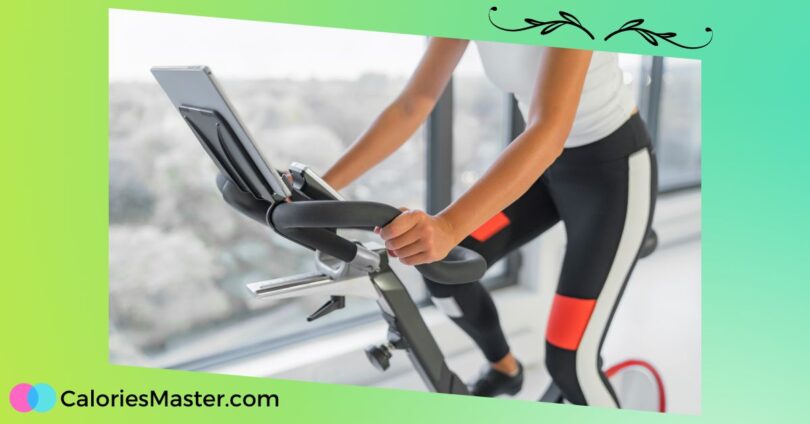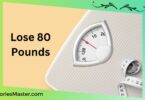Peloton is a popular fitness platform that offers a range of workouts, including cycling, running, strength, and yoga.
Many users have reported that their calorie burn seems low compared to other workouts, leaving them wondering why their calories are so low on Peloton.
One possible explanation is that Peloton calculates calorie burn based on a combination of factors, including age, weight, gender, heart rate, and power output. This means that if any of these factors are inaccurate or underestimated, it could result in a lower calorie burn reading.
Additionally, Peloton’s calorie burn calculations may not consider other factors that can affect calorie burn, such as the intensity of the workout, the duration of the workout, and individual differences in metabolism.
Another potential reason for low-calorie burn on Peloton is that users may not push themselves hard enough during their workouts. Peloton offers a range of difficulty levels and instructors, and it’s important to choose workouts that challenge you and push you outside of your comfort zone.
Additionally, users can adjust their resistance and cadence during cycling workouts to increase the intensity of the workout and burn more calories.
Understanding Peloton Calorie Calculation
Let’s Understand the Peloton Calorie Calculation.
Factors Influencing Calorie Burn
Several factors, including age, gender, weight, height, heart rate, and workout intensity influence calorie burn during a Peloton workout. Generally, the more intense the workout, the more calories burned.
Age and gender affect calorie burn because metabolism varies between individuals. Men typically have a higher metabolism than women, and younger individuals tend to burn more calories than older individuals due to their higher metabolic rate.
Weight and height also influence calorie burn, as larger individuals require more energy to move their bodies. Heart rate is another factor, as a higher heart rate indicates higher intensity and therefore, more calorie burn.
Peloton’s Algorithm Explained
Peloton uses an algorithm to calculate calorie burn during a workout. This algorithm considers the factors mentioned above, as well as the type of workout, duration, and resistance.
The algorithm uses a combination of machine learning and data analysis to estimate calorie burn. Peloton’s algorithm is constantly refined and updated based on user feedback and data analysis.
It’s important to note that calorie burn is an estimate, and actual calorie burn may vary based on individual factors and workout intensity. Peloton’s calorie calculations should be used as a guide, rather than an exact measurement of calorie burn.
Overall, understanding the factors that influence calorie burn and how Peloton’s algorithm works can help users make the most of their workouts and achieve their fitness goals.
Common Reasons for Low-Calorie Readings
Below are some common reasons for low-calorie readings
Incorrect User Profile Information
One of the most common reasons for low-calorie readings on Peloton is incorrect user profile information. When setting up a Peloton account, users are asked to provide their age, weight, and height. If any of this information is inaccurate, it can lead to lower calorie readings during workouts.
For example, if a user has entered their weight incorrectly, Peloton’s algorithm will calculate a lower calorie burn during workouts. Similarly, if a user has entered an incorrect age, the algorithm will assume a lower heart rate and therefore a lower calorie burn.
To ensure accurate calorie readings, users should regularly check and update their profile information.
Varied Fitness Levels and Effort
Another reason for low-calorie readings on Peloton is varied fitness levels and effort. Peloton’s algorithm calculates calorie burn based on a variety of factors, including heart rate, resistance, and cadence. If a user is less fit or not putting in as much effort during a workout, the calorie burn will be lower.
Additionally, Peloton’s calorie calculations are based on averages and may not take into account individual differences in metabolism and fitness levels. Therefore, users should not rely solely on calorie readings and should instead focus on overall fitness goals and progress.
Technical Issues and Calibration
Finally, technical issues and calibration can also lead to low-calorie readings on Peloton. If a user’s bike or treadmill is not properly calibrated, the calorie readings may be inaccurate. Similarly, if there are technical issues with the Peloton app or device, the calorie readings may not be reliable.
To ensure accurate calorie readings, users should regularly calibrate their equipment and troubleshoot any technical issues with Peloton’s support team.
Overall, there are several common reasons for low-calorie readings on Peloton, including incorrect user profile information, varied fitness levels and effort, and technical issues and calibration. By addressing these issues, users can ensure accurate calorie readings and better track their fitness progress.
Improving Calorie Burn Accuracy
Peloton bikes are designed to provide accurate calorie burn calculations, but sometimes riders may find that their calorie count seems too low. Here are two ways to improve the accuracy of your calorie burn calculations:
Updating Personal Information
Peloton calculates calorie burn based on personal information such as age, weight, and height. If this information is inaccurate, then your calorie count will also be inaccurate. To update your personal information, follow these steps:
- From the home screen, tap on your profile picture in the top right corner.
- Tap on “Edit Profile”.
- Update your personal information, including your age, weight, and height.
- Save your changes.
By updating your personal information, you can ensure that your calorie count is more accurate.
Calibrating Your Peloton Bike
The calibration of your Peloton bike can also affect the accuracy of your calorie burn calculations. Calibration is the process of adjusting the resistance on your bike so that it matches the resistance that Peloton expects at each level. To calibrate your bike, follow these steps:
- From the home screen, tap on “Settings”.
- Tap on “Device Settings”.
- Tap on “Calibrate Resistance.”
- Follow the on-screen instructions to calibrate your bike.
By calibrating your bike, you can ensure that the resistance matches Peloton’s expectations, improving your calorie count’s accuracy.
Overall, by updating your personal information and calibrating your bike, you can improve the accuracy of your calorie burn calculations on Peloton.
When to Consult Professional Advice
While Peloton provides a great platform for fitness enthusiasts to achieve their goals, sometimes the number of calories burned may seem too low. In such cases, it is important to consider consulting professional advice. Here are some scenarios where seeking professional advice may be necessary:
Medical Conditions
Individuals with medical conditions such as diabetes, thyroid problems, or hormonal imbalances may experience difficulty in burning calories. In such cases, it is important to consult a doctor or a registered dietitian for advice on how to manage their condition and achieve their fitness goals.
Injuries
Injuries can significantly affect an individual’s ability to burn calories. It is important to seek advice from a physiotherapist or a sports therapist to prevent further injury and to develop a safe and effective workout plan.
Plateau
If an individual has been consistently working out on Peloton and has reached a plateau in terms of calorie burn, it may be time to seek advice from a personal trainer or a coach. They can help develop a new workout plan that challenges the body and helps to burn more calories.
Eating Disorders
Individuals with eating disorders may struggle with consuming enough calories to sustain a workout. It is important to seek advice from a registered dietitian or a therapist to develop a safe and healthy eating plan.
In conclusion, while Peloton is a great platform for fitness enthusiasts, it is important to seek professional advice in certain situations to ensure a safe and effective workout plan.









